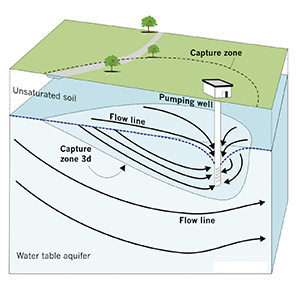Water well drilling: tips and key points to consider in water well design

All claims expressed in this article are solely those of the authors and do not necessarily represent those of their affiliated organizations, or those of the publisher, the editors and the reviewers. Any product that may be evaluated in this article or claim that may be made by its manufacturer is not guaranteed or endorsed by the publisher.
Authors
Thousands of water wells are drilled every day to abstract groundwater for a range of purposes. These wells are frequently sited and designed without adequate knowledge of the local hydrogeology and the targeted aquifer. Unfortunately, uninformed well siting and design is a common practice not only in Europe but also in many developing countries. The practice can not only jeopardize basic well function but also lead to a number of widely cited consequences to the environment, such as, undesired aquifer water mixing, hazardous soil subsidence, and the drying up of surface water bodies or springs. This brief paper highlights the key groundwater investigation procedures for more informed well siting and design to help mitigate against undesired environmental consequences. The subject has been discussed in recent literature, however this paper contributes practical insight based on the author’s real-world experience that may be valuable to the practitioner. The paper describes important procedures which should always be part of any water well project, regardless how much water is to be extracted. The paper addresses three issues critical to siting and designing wells: 1) the need for preliminary investigations and potential environmental impacts 2) the key experts that should be involved in these investigations; and 3) the core tasks of the hydrogeologist. Explanatory figures and references are given.
How to Cite

This work is licensed under a Creative Commons Attribution-NonCommercial 4.0 International License.
PAGEPress has chosen to apply the Creative Commons Attribution NonCommercial 4.0 International License (CC BY-NC 4.0) to all manuscripts to be published.














